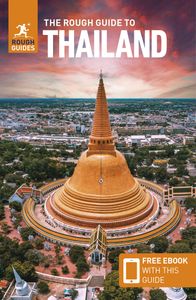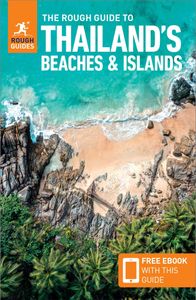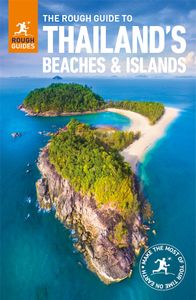Things to do in Surin
Wander through silk weaving villages, taste bold Isaan cuisine, and uncover ancient temples. Dive into local markets brimming with crafts and fresh produce. Surin invites you on a journey through lush landscapes and rich traditions, promising an authentic Thai adventure.
#1 Visit exclusive silk production
Some of Thailand’s most exclusive silk is produced in the village of Ban Tha Sawang which is just a short songthaew ride from the town centre. The best months to visit are between November and June, when the women aren’t required to work all day in the fields.
The Tha Sawang fabric is gold-brocade silk whose ancient designs are so intricate that it takes four weavers working simultaneously on a single loom a whole day to produce just 6cm. And while a standard everyday mut mee sarong might use five heddles (vertical frames of threads that determine the pattern) in its design. The Ban Tha Sawang Weaving Centre (daily 8.30am–5pm) houses around twenty looms, and you are welcome to observe the weavers at close quarters.
#2 Visit Prasat Ta Muean
Atmospheric Prasat Ta Muean, comprising three laterite ruins, is so remote and hemmed in by dense vegetation that you can’t help but feel like an intrepid explorer when you finally reach the site.
The first of the three sites is a simple, laterite sanctuary snuggled in a shady glade, while the second consists of a gopura, mondop and prang, also of laterite, surrounded by a wall and with an adjacent pond. The last and biggest site, a few hundred metres further south and known as Prasat Ta Muean Thom, is much larger, consisting of prang (three in all) and several other structures, some of laterite and others of sandstone, though few carvings remain. Unusually, like Phimai, the temple is oriented to the south rather than to the east, and the steep stairway which leads directly to Cambodia is heavily guarded by Thai military. In fact, you need to exchange your passports for visitors’ passes on entering the site and reclaim them on leaving.
#3 Book a Surin village tours
One of the best reasons for coming to Surin, is to take one of the excellent local tours organized from Pirom & Aree’s House. Pirom is a highly informed former social worker whose trips give tourists an unusual chance to catch glimpses of rural northeastern life as it’s really lived. His village tours feature visits to local silk-weavers and basket-makers, as well as to Ban Ta Klang elephant trainers’ village, and it’s also possible to do overnight village trips, including one that takes in Khao Phra Viharn (when open), Khong Chiam and Pha Taem.
#4 Visit the night bazaar
Aside from a reasonable range of local restaurants, Surin boasts a good-sized night bazaar, which occupies the eastern end of Thanon Krungsrinai and offers a tasty selection of local food (including roasted crickets and barbecued locusts in season), as well as stalls selling fashions and toys. Surin also has a surprisingly wild nightlife for a provincial town, with a clutch of seedy bars and discos around the neon-lit ‘Strip’ east of the centre at the northern end of Thanon Sirirath and along Soi Kola, just north of the Thong Tharin Hotel.






















